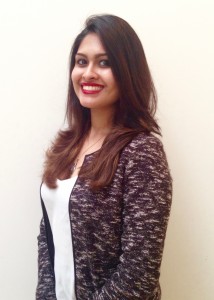Meet our 2016 Wadsworth International Fellows: Mulky Shruti Kamath
 Mulky Shruti Kamath received her undergraduate education at the University of Southampton. Thanks to the Wadsworth International Fellowship, she will continue her training with a PhD in physical-biological anthropology at University College London supervised by Dr. Maria Martinon-Torres.
Mulky Shruti Kamath received her undergraduate education at the University of Southampton. Thanks to the Wadsworth International Fellowship, she will continue her training with a PhD in physical-biological anthropology at University College London supervised by Dr. Maria Martinon-Torres.
South India, I developed a fascination for archaeology exclusively through reading and travel. After completing my secondary education in science, I moved on to attain a BA in history (2014). To learn more about archaeological practices, I took up an online course from the Oxford Department for Continuing Education (UK), which furthered my interest in archaeology and anthropology, particularly of the Palaeolithic.
In 2014, I went on to pursue my MA at the University of Southampton, UK, in Palaeoltihic Archaeology and Human Origins, which took a comprehensive approach towards teaching this subject and helped me gain a greater understanding of the human story. I developed my current research interests during my Masters dissertation, when I was given the opportunity to study morphological features of dental samples using novel methods like microtomography (μCT) and geometric morphometrics. I learned and incorporated these techniques that form the core of virtual anthropology to explore variations in premolars in archaeological and modern human samples ranging from 3.5 million years ago to the current era. My results showed an evolutionary change in premolar morphology caused by distinctive adaptations, genetic influences and dietary patterns.
My doctoral research at University College London (UCL), UK, is a progression of my previous work and incorporates μCT, geometric morphometrics and statistical analysis. Dental traits have high genetic components and are particularly beneficial for phylogenetic studies. This research will offer an extensive investigation of the lower premolar morphology of the Early and Middle Pleistocene hominins from Atapuerca (Spain), as well as other Early, Middle and Late Pleistocene samples from Asia, Africa and Europe. Their comparative analysis will provide a clearer insight into the taxonomy and phylogeny of the European hominins, ultimately characterizing the variability of Pleistocene populations. This project is supervised by Dr. María Martinón-Torres, a renowned palaeoanthropologist, and a leader in dental anthropological research. The presence of such prominent academic staff, the availability of high-end research facilities, and the innovative approaches taken at UCL will undoubtedly help me acquire the necessary skills and expertise to establish myself in the field of palaeoanthropology.